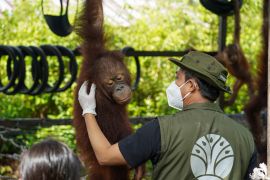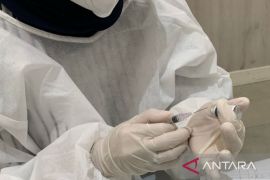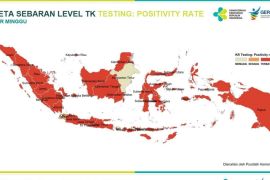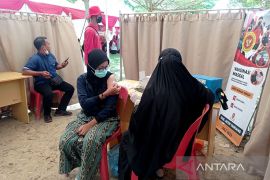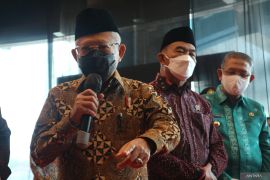However, even though the end of the pandemic is near, we still have not entered the endemic stage yet.
On September 14, 2022, World Health Organization (WHO) released six short policy briefs on the actions governments worldwide should take to end the pandemic.
Those actions are based on evidence and experience of the past 32 months on the best ways to save lives, protect health systems, and avoid social and economic disruptions.
First, the coverage of COVID-19 vaccinations for priority groups, including health workers and older adults, must reach at least 97 percent of the total population.
Second, WHO requires continuous testing and sequencing for COVID-19 and integration of surveillance and testing services, including for other respiratory disorders, such as influenza.
Third, every country must have a system to provide services to patients and integrate COVID-19 services with the health care system at the primary level.
Fourth, prepare for a spike in cases by ensuring that all countries have the facilities and health workers needed.
Fifth, continue to take infection prevention and control measures, as well as protect health workers and COVID-19 patients in health facilities.
Sixth, communicate well with the community regarding any changes in COVID-19 policies, including the reasons, and train health workers to identify and convey the information and develop high-quality information in digital formats.
Currently, several countries are experiencing an increase in the number of COVID-19 cases. One of them is Russia, whose daily new confirmed COVID-19 cases reached 43,261.
Related news: COVID-19 pandemic in Indonesia is headed toward endemic phase: VP
Vaccination
According to data from the Ministry of Health's Data and Information Center (Pusdatin), as of September 15, 2022, Indonesia was in a relatively controlled pandemic situation.
The number of daily confirmed COVID-19 cases in the country was at some 2,631 cases from 33,775 people tested. However, the positivity rate, 7.85 percent, was still above the safe standard set by WHO, at 5 percent.
The mortality rate has also declined compared to the week before, with 17 fatal cases, or 2.47 percent. Moreover, hospital bed occupancy was at 2,999 patients, which is still deemed safe.
In Indonesia, seven provinces were still experiencing an increase in cases, including West Papua, North Sulawesi, Bangka Belitung Islands, Riau Islands, North Sumatra, Jambi, and Central Sulawesi.
Meanwhile, the number of cases in Java and Bali has peaked, and the two islands were consistently experiencing a decline in weekly cases.
To contribute to putting an end to the pandemic, Indonesia still has work to do in terms of elderly COVID-19 vaccination coverage. Of the 21.55 million older adults targeted to become vaccinated against the virus, so far, 18.36 million, or 85.19 percent, have received the first vaccine dose. Meanwhile, the coverages for the second and third doses have reached 14.86 million, or 68.88 percent, for the second dose and 6.61 million older adults, or 30.70 percent, for the third dose.
In general, as of September 15, 2022, from 234.66 million citizens targeted to be vaccinated, the number of Indonesian citizens who have received at least the first vaccine dose has reached 203.92 million, or 86.90 percent. Then, as many as 170.55 million or 72.68 percent have received the second dose, and 62,080,191 or 26.45 percent have received the third dose, or first booster dose.
The number of people being vaccinated has declined. As of September 15, 2022, only 56,023 people received the vaccine. The figure showed a significant decline compared to the figure recorded before the Eid homecoming period in March and April, which almost reached 1.4 million people vaccinated in a single day.
One of the efforts to accelerate vaccinations in the country is reopening vaccination sites in public spaces to attract the community to be vaccinated.
The Ministry of Health is also implementing a strategy of directly visiting those who have not been vaccinated to facilitate their accessing vaccination services, especially vulnerable people.
To anticipate future pandemics, Indonesia is currently developing locally-made COVID-19 vaccines, namely Inavac and Indovac, that are estimated to become available in late 2022.
Related news: Ministry accelerates 100-million booster participants' coverage
Challenges
Epidemiologists have ensured that the SARS-CoV-2 virus that causes COVID-19 will continue to circulate in the community, even if the pandemic has ended.
The BA2.75.2 Omicron subvariant is one of the variants that can potentially extend the fourth wave of the COVID-19 pandemic in Indonesia, due to its ability to dodge immunity from vaccinations.
All parties must remain alert, especially regarding infected people with no symptoms or asymptomatic patients who are currently detected to reach 80 percent of the total infected patients in Indonesia.
Moreover, 60 percent of cases of transmission occur from asymptomatic patients.
The Ministry of Health predicted that people’s immunity will decline in early 2023. Thus, the ministry saw the need to accelerate booster vaccinations to reach 100 million recipients next year.
The challenges for the world to enter the endemic stage need to be faced with developments in science, considering that there are still many things that have not been fully mastered by every country.
The endemic stage may be near. For that, the Indonesian nation needs to take a role with the world community to maintain the achievement of the currently controlled pandemic consistently. Because if not, the golden opportunity to enter the endemic stage will not be realized.
Related news: Increase booster vaccination coverage to attain endemic status
Related news: COVID-19: Regional govts asked to increase booster vaccine coverage
Editor: Suharto
Copyright © ANTARA 2022

